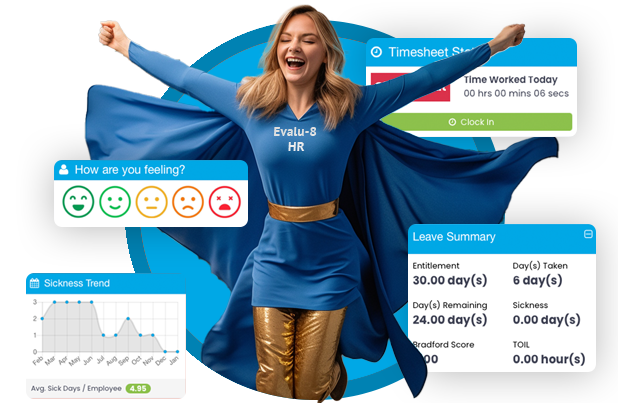In the world of employment, there are a myriad of working patterns that can be adopted to suit the needs of both the employer and the employee. One such pattern is the split shift. This term refers to a type of work schedule that is divided into two or more segments in a day, rather than being worked continuously. This article aims to provide a comprehensive understanding of the split shift working pattern, its advantages, disadvantages, and its application in various industries.
Split shifts are often used in industries that have peak periods of activity during the morning and evening, but have a lull in the middle of the day. Examples of these industries include hospitality, healthcare, and public transportation. By understanding the intricacies of the split shift, employers can better manage their workforce and employees can better manage their work-life balance.
What does Split Shift mean?
The split shift is a work schedule where an employee’s workday is broken up into two or more separate periods. The break between these periods is typically longer than a standard lunch break and is unpaid. For example, a restaurant worker may work a split shift where they work from 11 am to 2 pm, take a break, and then return to work from 5 pm to 10 pm.
Split shifts can be beneficial for both employers and employees. For employers, split shifts can help to manage staffing levels during peak times, reducing the need for additional staff. For employees, split shifts can provide flexibility, allowing them to manage personal responsibilities or pursue other interests during their break period.
Legal Considerations of Split Shifts
In the UK, there are specific laws and regulations that govern the use of split shifts. The Working Time Regulations 1998 stipulates that workers have the right to a rest period of 11 consecutive hours in each 24-hour period. This means that if an employee works a split shift, the total time of their shift, including the break, cannot exceed 13 hours.
Furthermore, if an employee works more than six hours, they are entitled to a 20-minute rest break. This break is not included in the split shift break. It’s important for employers to be aware of these regulations to ensure they are compliant and to protect the rights and wellbeing of their employees.
Health and Wellbeing
While split shifts can provide flexibility, they can also have an impact on an employee’s health and wellbeing. The long break in the middle of the day can disrupt sleep patterns and lead to fatigue. This is particularly true for workers who have a long commute or who work in physically demanding jobs.
Research has also shown that split shifts can have a negative impact on mental health, leading to increased stress and anxiety. Employers should consider these factors when implementing split shifts and provide support to employees to manage these potential impacts.
Advantages of Split Shifts
Despite the potential drawbacks, there are several advantages to split shifts. For employers, split shifts can help to manage staffing levels during peak times, reducing the need for additional staff. This can lead to cost savings and increased efficiency.
For employees, split shifts can provide flexibility, allowing them to manage personal responsibilities or pursue other interests during their break period. This can lead to increased job satisfaction and improved work-life balance.
Flexibility
One of the main advantages of split shifts is the flexibility they provide. For employees with personal responsibilities, such as childcare or eldercare, split shifts can allow them to manage these responsibilities without impacting their work. This can lead to increased job satisfaction and improved work-life balance.
For employers, split shifts can provide the flexibility to manage staffing levels during peak times. This can lead to cost savings and increased efficiency.
Efficiency
Split shifts can also lead to increased efficiency. By aligning staffing levels with peak times, employers can ensure they have the right number of staff when they need them. This can reduce downtime and increase productivity.
For employees, split shifts can also lead to increased efficiency. The break in the middle of the day can provide a much-needed rest, allowing them to return to work refreshed and ready to perform at their best.
Disadvantages of Split Shifts
While there are several advantages to split shifts, there are also several disadvantages that need to be considered. These include potential impacts on health and wellbeing, the potential for increased stress and anxiety, and the potential for disruption to personal life.
It’s important for employers to consider these potential disadvantages when implementing split shifts and to provide support to employees to manage these potential impacts.
Health and Wellbeing
As mentioned earlier, split shifts can have an impact on an employee’s health and wellbeing. The long break in the middle of the day can disrupt sleep patterns and lead to fatigue. This is particularly true for workers who have a long commute or who work in physically demanding jobs.
Research has also shown that split shifts can have a negative impact on mental health, leading to increased stress and anxiety. Employers should consider these factors when implementing split shifts and provide support to employees to manage these potential impacts.
Disruption to Personal Life
While split shifts can provide flexibility, they can also lead to disruption to personal life. The long break in the middle of the day can make it difficult to plan personal activities or spend time with family and friends. This can lead to increased stress and reduced job satisfaction.
Furthermore, the irregular hours can make it difficult to establish a regular routine, which can have a negative impact on health and wellbeing. Employers should consider these factors when implementing split shifts and provide support to employees to manage these potential impacts.
Industries that Commonly Use Split Shifts
Split shifts are commonly used in industries that have peak periods of activity during the morning and evening, but have a lull in the middle of the day. Examples of these industries include hospitality, healthcare, and public transportation.
In the hospitality industry, split shifts are often used to manage staffing levels during peak meal times. In the healthcare industry, split shifts can be used to ensure there is adequate staffing during peak times of patient care. In the public transportation industry, split shifts can be used to manage staffing levels during peak travel times.
Hospitality
In the hospitality industry, split shifts are often used to manage staffing levels during peak meal times. For example, a restaurant worker may work a split shift where they work from 11 am to 2 pm, take a break, and then return to work from 5 pm to 10 pm.
This allows the restaurant to have the right number of staff during peak times, without having to employ additional staff. It also allows the worker to have a break during the quieter period in the middle of the day.
Healthcare
In the healthcare industry, split shifts are often used to ensure there is adequate staffing during peak times of patient care. For example, a nurse may work a split shift where they work from 7 am to 11 am, take a break, and then return to work from 3 pm to 7 pm.
This allows the healthcare facility to have the right number of staff during peak times, without having to employ additional staff. It also allows the worker to have a break during the quieter period in the middle of the day.
Public Transportation
In the public transportation industry, split shifts are often used to manage staffing levels during peak travel times. For example, a bus driver may work a split shift where they work from 6 am to 10 am, take a break, and then return to work from 4 pm to 8 pm.
This allows the transportation company to have the right number of drivers during peak times, without having to employ additional drivers. It also allows the driver to have a break during the quieter period in the middle of the day.
Conclusion
In conclusion, split shifts are a type of work schedule that can provide flexibility for both employers and employees. However, they also have potential disadvantages that need to be considered, including impacts on health and wellbeing and disruption to personal life.
It’s important for employers to be aware of these potential impacts and to provide support to employees to manage them. By doing so, they can ensure that split shifts are a beneficial working pattern for all involved.
See the quick demo now
Before we show you the quick demo, we need to make sure you are a real person.



